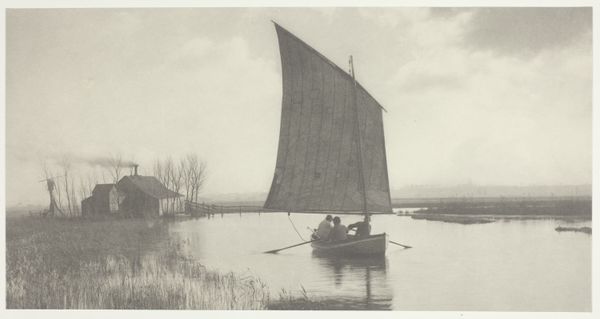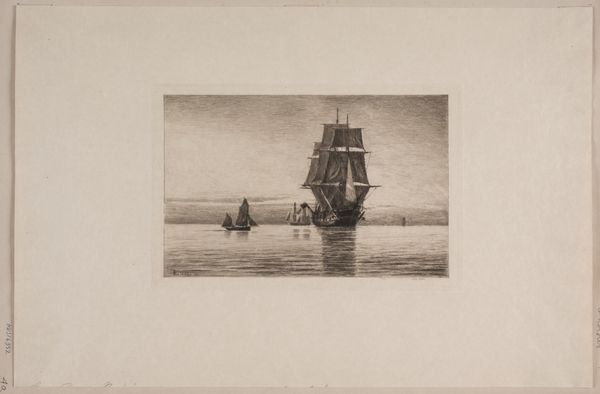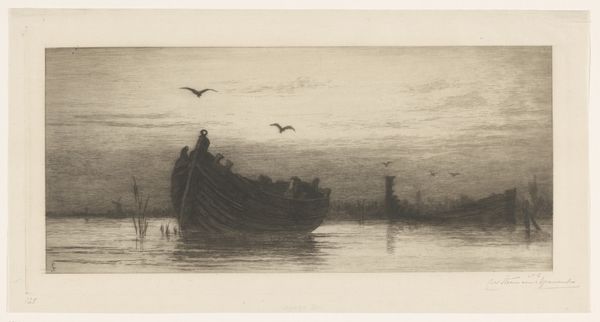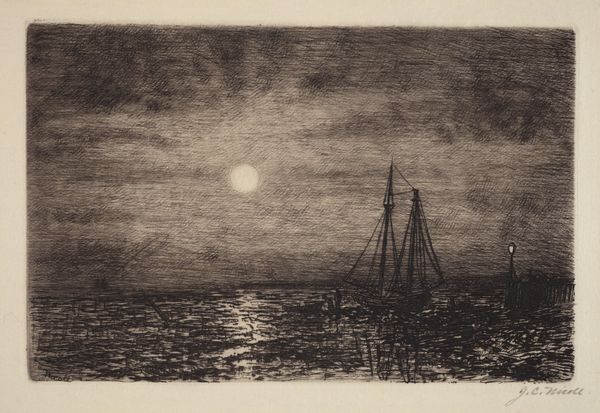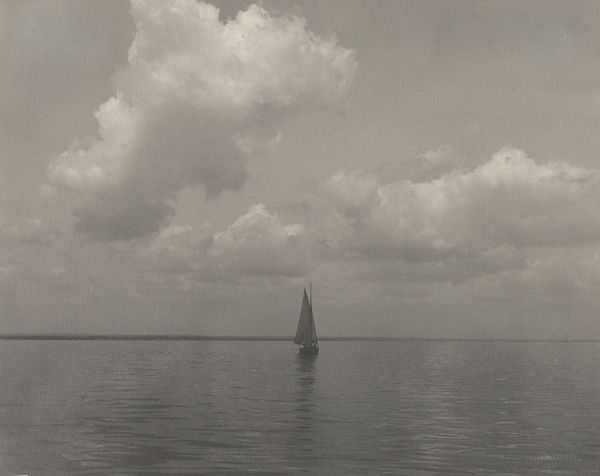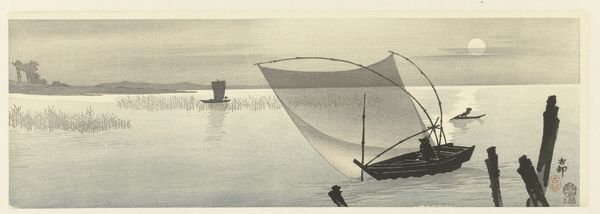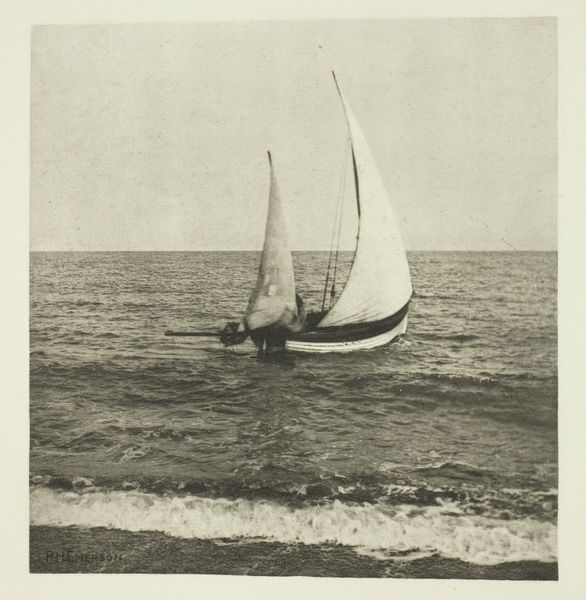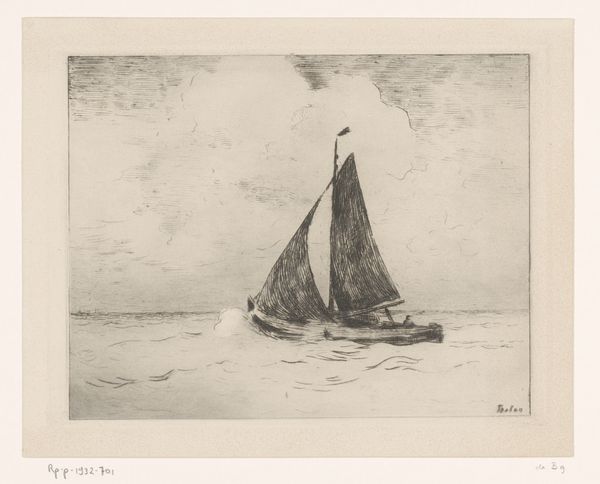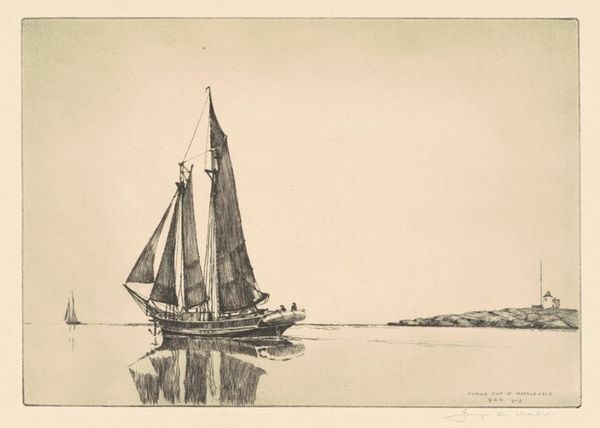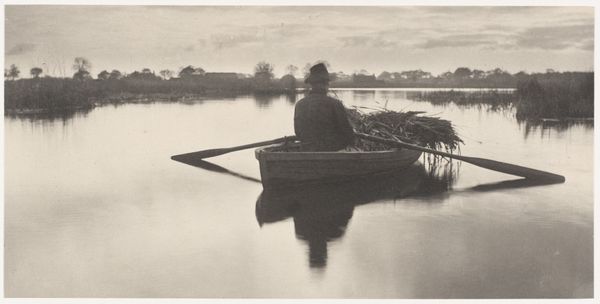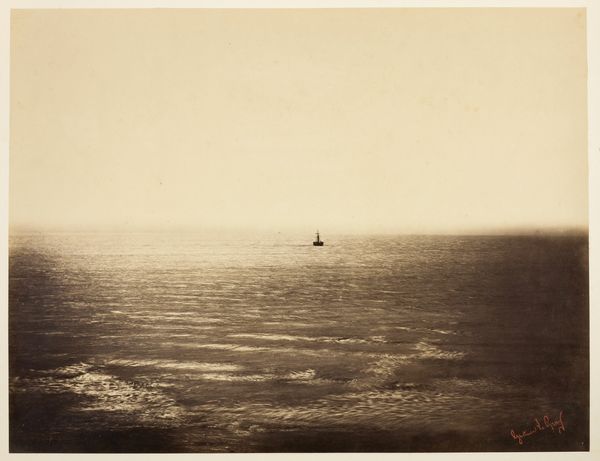
drawing, print, plein-air, paper, photography
#
drawing
# print
#
plein-air
#
landscape
#
outdoor photograph
#
figuration
#
paper
#
photography
#
romanticism
#
monochrome photography
#
water
#
united-states
#
line
#
realism
Dimensions: 283 × 534 mm (sight)
Copyright: Public Domain
Curator: It’s fascinating to consider "Sailboat and Haystacks on Newbury Marsh," particularly because it offers such a stripped-down view. The artist is Martin Johnson Heade, though the piece is undated. It's a print that showcases a unique plein-air approach to landscape. Editor: Well, my first impression is one of serenity mixed with melancholy. That stark, monochromatic palette really sets a mood. It almost feels like a memory, fading gently around the edges. The overall effect has such striking visual impact, doesn’t it? Curator: Absolutely. Heade captures the quiet solitude of the marsh so well. And that use of the monochromatic aesthetic--think about it: how might that emphasize the industrial presence and changes happening along such marshy terrain at this time in history? Editor: Good question. Those haystacks are such peculiar shapes; are they the only form of figuration that the scene is relying upon, would you say? In that case, I am quite impressed by their ability to contrast against what looks to be quite undisturbed water, at least for the majority of the composition, as that definitely draws the viewer's eyes across the work from left to right! Curator: The composition does encourage the eyes to travel. It pulls your vision between the land and the water--an engagement, maybe? The muted palette does have this way of invoking quiet change, so it definitely makes me think of his own place in landscape art history--I wonder how aware Heade might have been of all this? Editor: I can see why such serene visuals might resonate differently given the setting. It's fascinating how the image serves as an industrial, natural, and economic document all at once! This piece really manages to capture the soul of that landscape; that is something else that makes the work truly great and a treasure in its own right, even today. Curator: Indeed, it serves as a beautiful reminder of our intrinsic relationships with nature, culture, and landscape as we experience it through different historical contexts, be they national, socioeconomic, political, or otherwise. It leaves us contemplating both nature and human existence. Editor: I agree; It reminds us how our interpretations inevitably affect even monochrome landscapes, too.
Comments
No comments
Be the first to comment and join the conversation on the ultimate creative platform.


